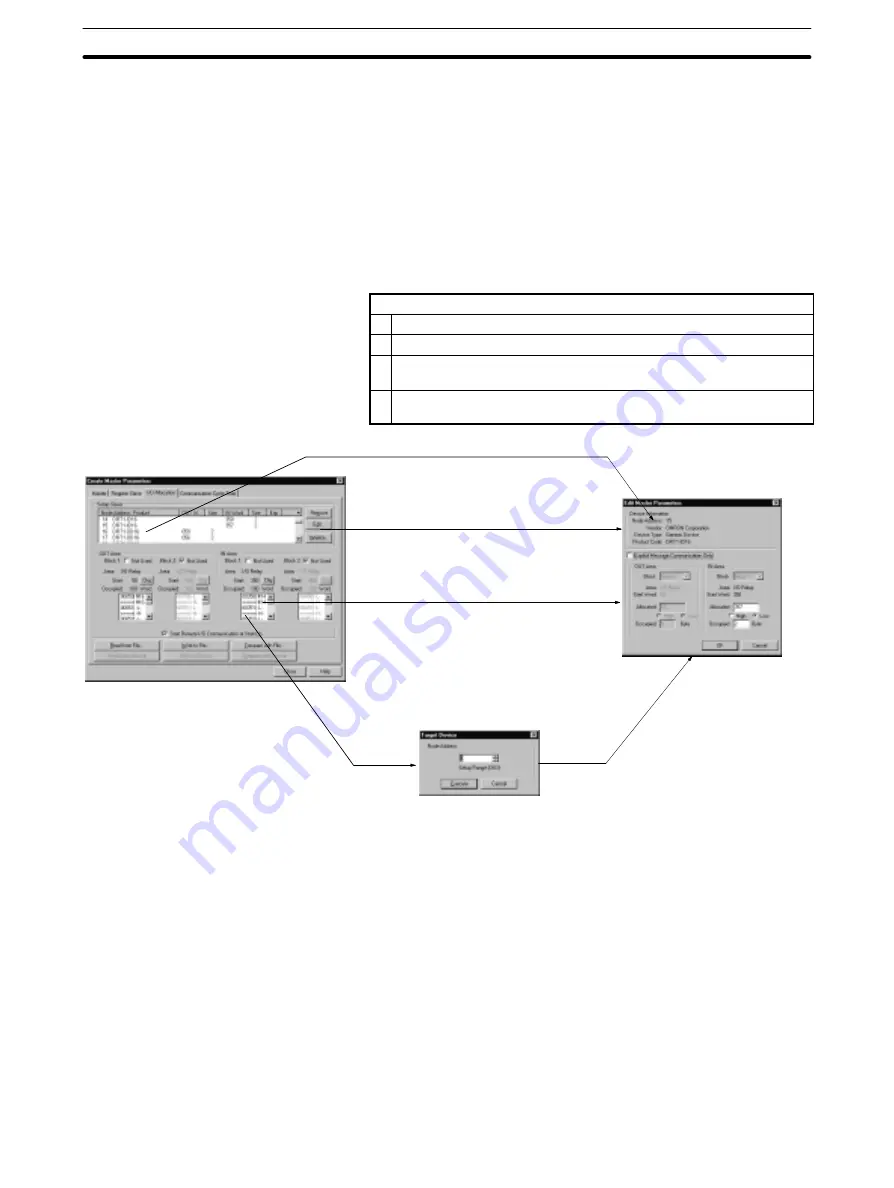
3-6
Section
Creating and Editing Master Parameters
63
•
Method 2:
Select and drag the Slave from the Setup Slave display area to the desired
block’s allocation column, which shows the allocation of each byte in the
block.
a) Allocation Method 1: Editing with the Editing Window
Display each Slave’s allocation setting window and set the word alloca-
tion. With this method, the number of I/O bytes required by the Slave can
be checked while allocating memory.
i) Display the Slave’s I/O allocation window.
There are 4 ways to display the Slave’s I/O allocation window. Any of
these methods can be used.
Displaying a Slave’s I/O Allocation Window
1
Double-click on the desired Slave.
2
Select the desired Slave and click on “Edit.”
3
Double-click on a byte in the block allocation column that is
allocated to the desired Slave.
4
Double-click on a byte in the block allocation column that isn’t
allocated to a Slave and input the desired Slave’s node address.
I/O Allocation window
1. Double-click on the Slave.
2. Select the Slave and click “Edit.”
3. Double-click on a byte allocated
to the Slave.
4. Double-click on a byte that hasn’t
been allocated and input the
Slave’s node address.
Selected Slave’s
I/O allocation window






























